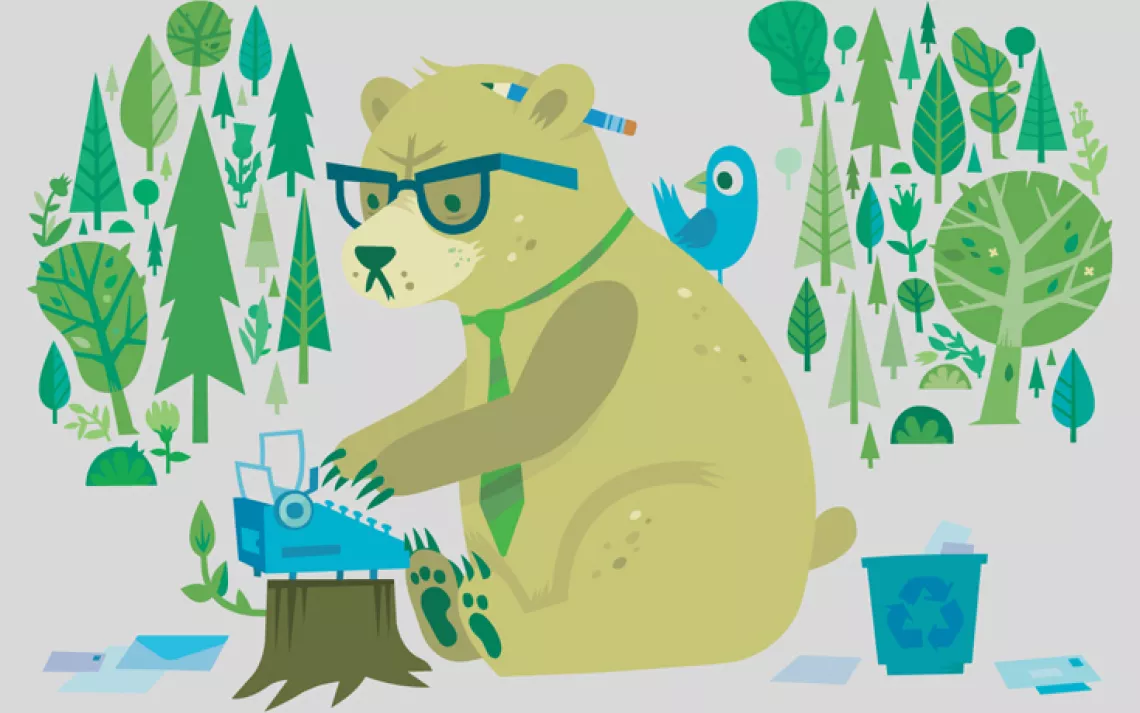Mr. Green Digs up the Dirt on Lead

Hey Mr. Green,
My wife and I are urban-eco-homesteaders whose house has a backyard big enough for a modest vegetable garden. It was built in the early 1900s, so we had the soil tested. The results indicate high levels of lead--940 parts per million. We want to live the Urban Renaissance dream, but our ground is too toxic for safe tomatoes and non-life-threatening arugula. What to do? What level of remediation is advisable? Will two feet of composted yard waste in raised beds make enough of a difference, or is the lead down below still a hazard? Should we put a barrier between the toxic soil and the compost above? Do we need to have our yard scraped up and hauled away? Or can you make a house call and use your Mr. Green eco-superpowers to extract the lead, leaving behind only clean, life- giving soil? —Don’t-Wanna-Be-Known-as-Leadbelly in Washington, D.C.
If your soil has more than 400 parts per million of lead it’s time to worry, says the EPA, so at 940 ppm you’re well in the danger zone. But you’re not so far gone that you need to install two-foot raised beds and barriers. When the count hits 1200, then it’s time for such drastic action.
Fortunately, there are simple ways to reduce the hazard, so you don’t have to rely on Mr. Green’s superpowers. You’ve already taken the essential first step of having your soil tested. Next, simply add lots of clean compost and soil to reduce the concentration of lead. You’ll want to test the soil for pH; if it’s too acidic (less than pH 6.5) amend it to around a pH 7, because plants take up less lead in pH-neutral soils. But understand that most lead is not absorbed into plants themselves, but sticks on them. Up to 65 percent is in the form of dirt clinging to plants, while another 15 percent comes from your own contact with the dirt, according to EPA research. You can eliminate most of this lead by tossing outer leaves that catch dirt, thoroughly washing your produce, and wearing gloves when you garden. Also, leave your gardening shoes outside to avoid tracking lead in. Finally, since root crops obviously have more soil on them, wash and peel them carefully or avoid growing them. (As a fellow urban gardener, I find that root crops are usually so cheap that I use my limited space for costlier produce. Kale, for example, is now so trendy that an organic bunch fetches $3, so it makes more economic sense to raise kale instead of carrots anyway.)
The biggest threat from lead is to children and their dear, delicate little brains and nervous systems, so be extra careful if you have any such creatures. This is serious business: Research suggests a correlation between lead and violent crime, connecting the sharp decrease in violent crime since the 1990s to the phase-out of leaded gasoline begun in 1974 and completed in 1996.
Another likely source of contamination in your old house is lead paint. Ninety percent of homes built before 1940 contain paint with lead, says the EPA, close to 70 percent of those from then until 1959, and 25 percent before the 1979 ban. To keep your young ones from a life of crime, be extremely cautious if you remove old paint, or hire a contractor certified to deal with it. Keep toddlers and other kids away from paint on window frames, walls, and floors. Wash their toys and pacifiers, insist that they wash their hands, and keep them away from outdoor dirt unless you are sure the lead level is safe.
For more about lead and reducing its dangers, see the EPA’s comprehensive “Protect Your Family” (your tax dollars at work).
Follow Sierra on Facebook, Twitter, Pinterest, Instagram and YouTube.
 The Magazine of The Sierra Club
The Magazine of The Sierra Club